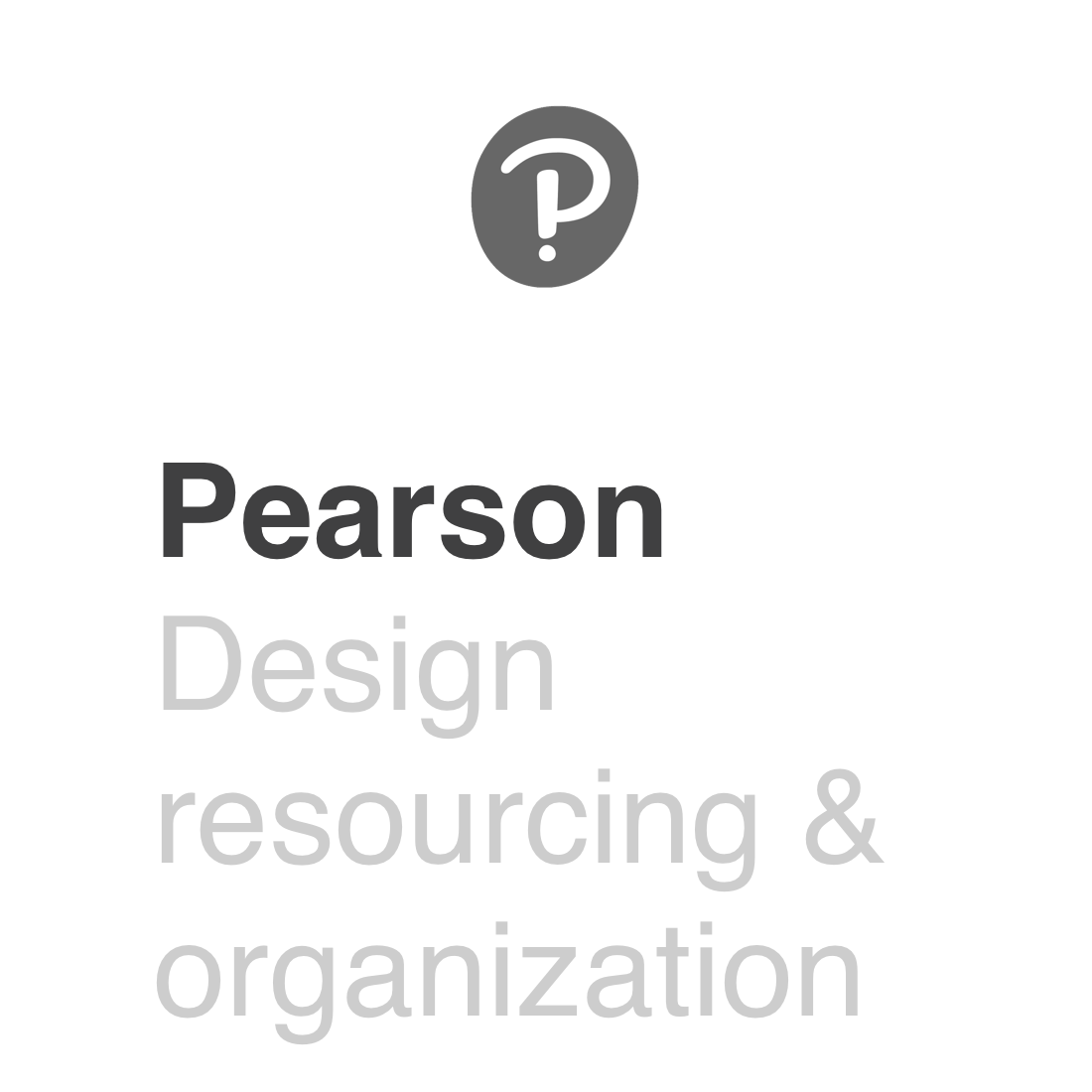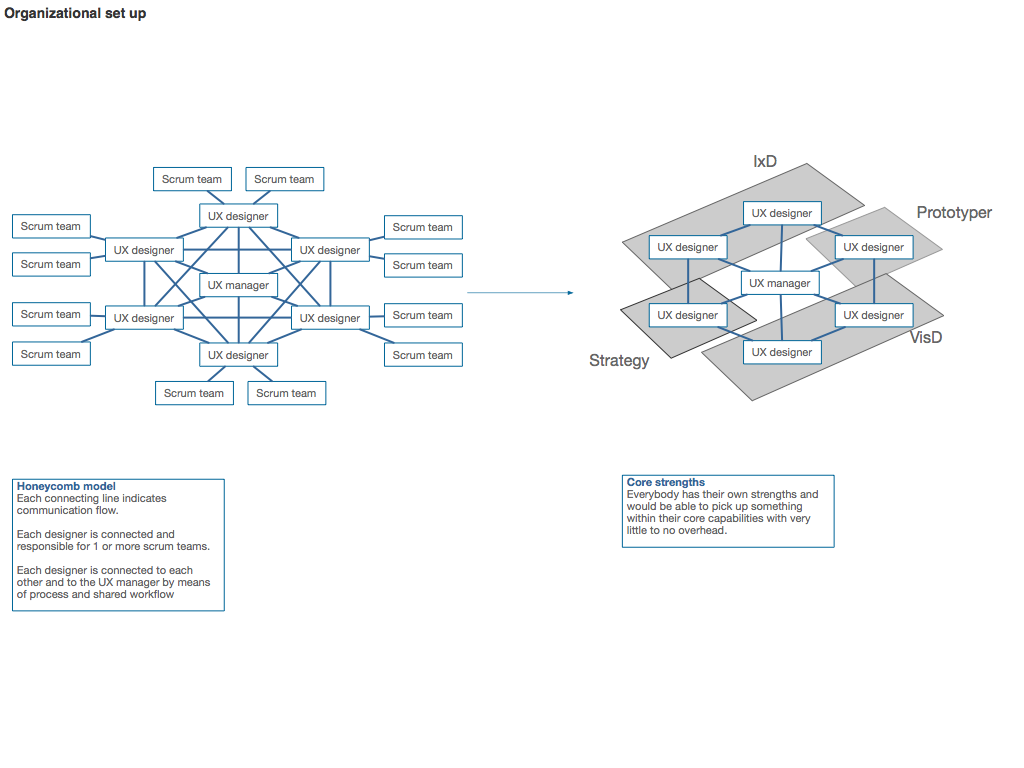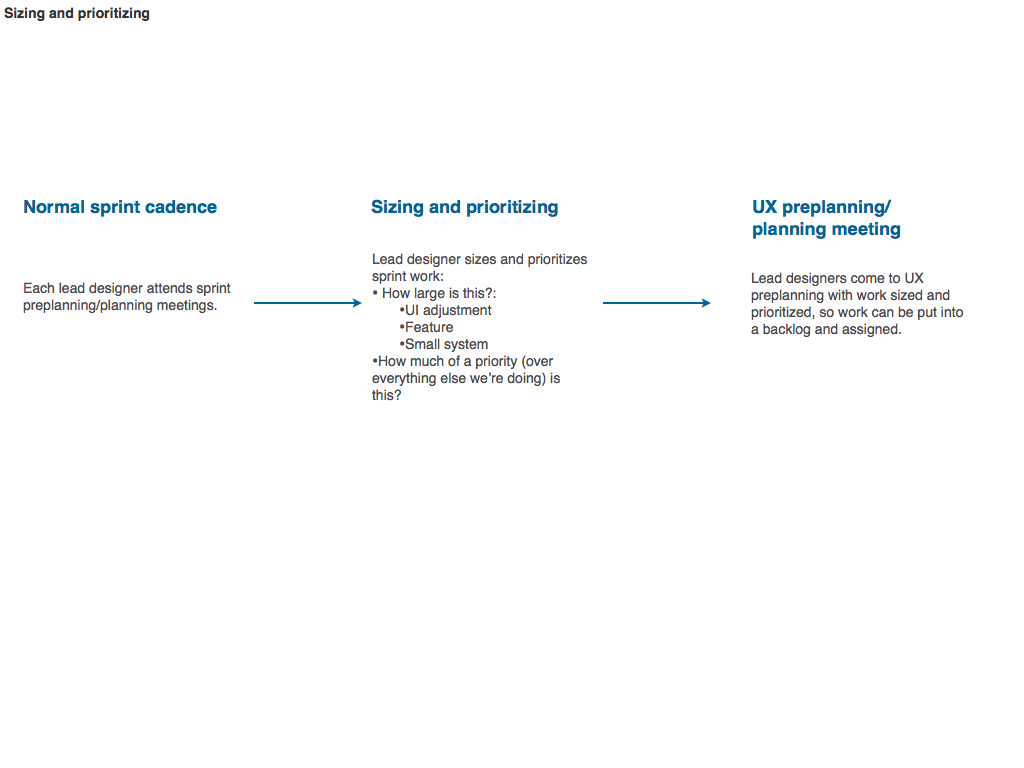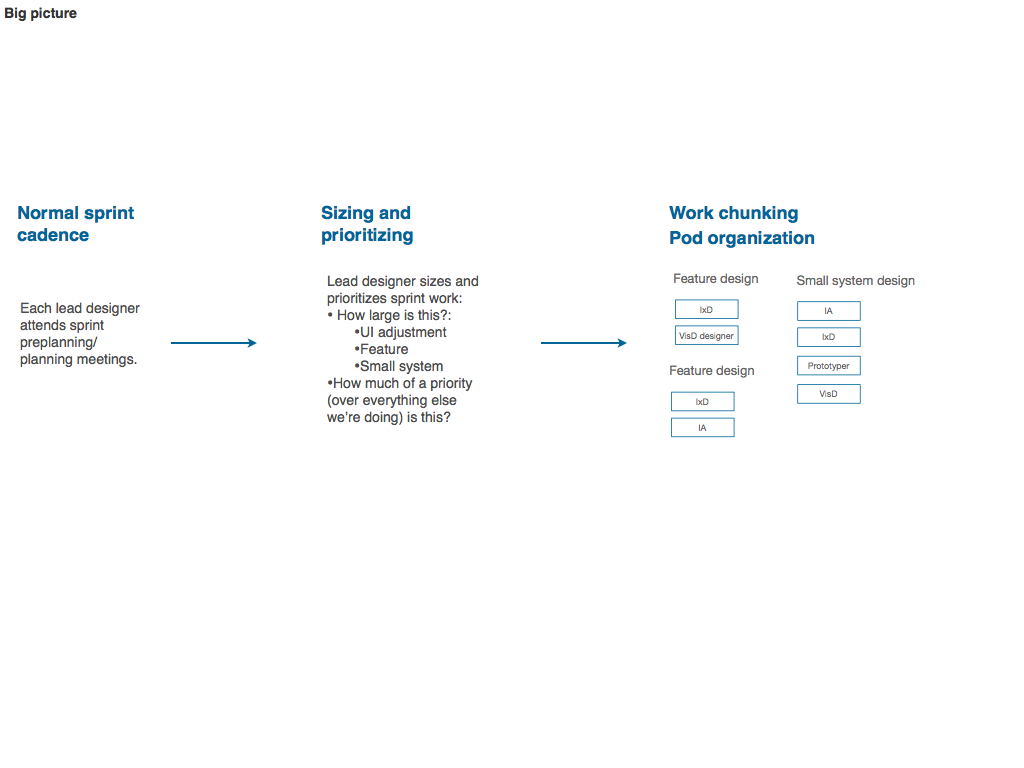
Creating a more efficient and collaborative team process
When I was working with Schoolnet at Pearson, there were 8 UX people (including our manager), and each of us was lead for at least 2 different scrum teams. Agile environments are great for teams themselves, but when you need to communicate as a discipline, sometimes things can get hairy. Plus, resourcing was becoming an issue - some of us were super stressed, while others had extra time. We as a UX team needed new communication, organizational and process models to help things run smoothly.
In addition, we all had different strengths, and isn't just one piece, it's several pieces. So, we had to figure out how to help each of us work to our strengths, too.

Honeycomb model
I put forth a honeycomb model for both organization and communication: our manager would be at the heart of our group, while we were all connected to each other, and in turn our scrum teams. I then proposed we run our own parallel grooming process, so each of us would know what the other teams was working on, and we'd be able to jump in when necessary. The parallel grooming process would also allow us to self organize into skill/strength based pods to tackle the work for a given sprint; each of us would still be lead for our individual scrum teams, we'd be happier doing what each of us was best at, we'd get to collaborate with each other, and we'd balance out the workload so we could build a pattern library and style guide so we didn't have to reinvent the wheel for every feature every sprint.
This model needed to be integrated into the larger product processes, and wasn't actually implemented due to organizational restructuring.


